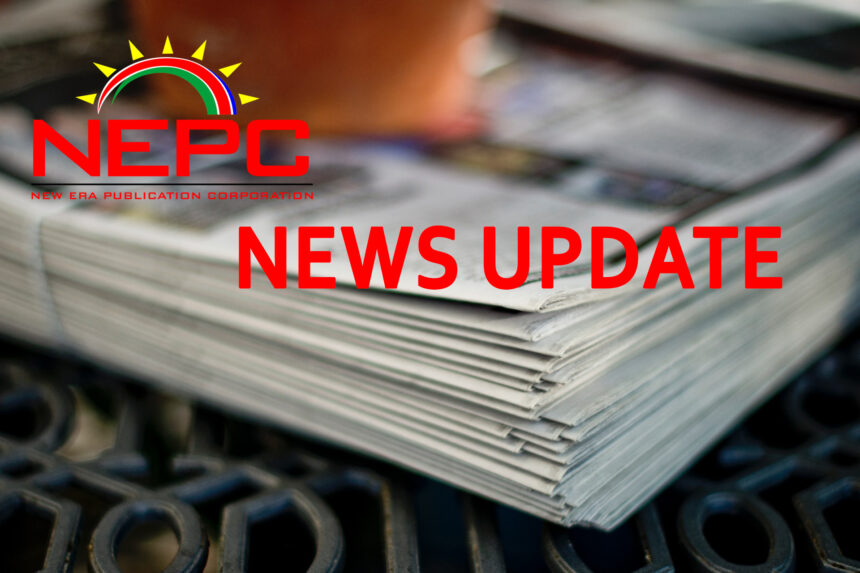Lahja Nashuuta
Paulina Ndalikokule
As government’s almost N$1 billion emergency relief fund kicks into gear with a comprehensive plan to aid both farmers and food-insecure families, the debilitating drought is also throwing spanners into the works of the Electoral Commission of Namibia in Kunene.
Electoral Commission of Namibia (ECN)’s elections officer in Kunene Mike Nganjone said the region is faced with the challenge of registering residents in rural areas because they are constantly migrating with their animals in search of better grazing and water.
Last Friday, ECN announced in a press release that only 187 171 voters registered in the first week of the registration process.
The Commission says the figure represents an average of 31 195 registered voters per day over a period of six days.
In their press release, ECN stated that Kunene region had the second -least number of voters of 5 855, despite its population of 120 762, as indicated by the 2023 preliminary census results.
Omaheke region had the least number of voters of 5 057, while Zambezi came third-least with only 5 862 voters, compared to Khomas, which topped the list with 40 055.
Nganjone in an interview with New Era said despite efforts to reach out and educate voters in the region, the migration challenge remains a thorn in their flesh.
“We are not having major challenges to say, but we are not getting many voters in rural areas because in some areas, when our team reaches there, most eligible voters have already migrated,” he said.
He said they use platforms such as the media and social media groups to share information, but some areas in deep villages do not have such services.
“We are currently sending an upfront team that informs the inhabitants in these villages before we send the team that will facilitate the registration,” he said.
Kunene has 482 registration points spread across its seven constituencies.
Opuwo Rural has 91, Kamanjab has 52 registration points, Khorixas has 59, Epupa has 145, Outjo has 39, Sesfontein has 66, while Opuwo Urban has 30.
ECN’s Zambezi regional elections officer Sammy Muhau said the voter registration process is going slowly because they started with the least-populated villages. He is optimistic the region will pick up once they start registering in the most-populated villages and urban areas.
“In areas like Unam, more people are coming to register, especially first-time voters,” he said. Zambezi has a population of 142 373.Omaheke has a population of 102 881, and had the least voters of 5 057.
The ECN regional coordinator in Omaheke, Josef Amwandi, said they are not facing any challenges, adding they have a low number because of the region’s population. Highly-populated Khomas registered over 40 000 voters in the first week, followed by Ohangwena with over
20 000 voters and Omusati with 18 128 voters. Eligible voters are encouraged to register within their constituencies until 1 August.
War chest
Last month, President Nangolo Mbumba declared a state of emergency on the persistent drought, joining other SADC countries that have also done the same to soften its impact.
The government set aside an initial N$1 billion to facilitate the delivery of food to about 1.3 million people considered to be food-insecure.
This is according to details on the nationwide drought relief programme released by the Office of the Prime Minister (OPM) recently.
The funds will be channelled towards the drought programme, which entails food assistance to vulnerable households, seed and horticulture provision, livestock support programme and water provisions.
According to information obtained from the OPM, N$600 million is set aside to procure food items.
The government, through the OPM,
has already commenced with a comprehensive nationwide relief food assistance programme in all the 14 regions.
Beneficiaries are currently receiving food on a monthly basis. Households
with a combined monthly income not exceeding N$3 200 receive one bag of 20kg maize meal or mahangu, four tins of fish of 400g each or 400g of soya mince, or 1.5kg of frozen beef or 1.5kg of game meat and one bottle of 750ml cooking oil.
The report further reveals government is gradually transitioning from in-kind distribution of food to a voucher-based system in a bid to provide drought relief efficiently.
“This will enable beneficiaries to redeem or obtain their food items from locally- participating retailers. This model comes with multiple benefits, including that of ensuring food items reach vulnerable communities,” the statement reads.
The report further indicates the livestock support programme and water provisions are each budgeted at N$100 million, while N$25 million is set aside for seed and horticulture provision.
As part of the livestock support programme, government will provide a maximum subsidy of N$750 per large stock unit (cattle) to a maximum of 75 cattle, and N$150 per small stock unit (goat and sheep) to a maximum of 375 small stock unit, or a combination of the two.
The maximum subsidy amount per farmer under the marketing incentive scheme will be N$56 250. With regards to water provision, the budget will be spent on the rehabilitation as well as installation of boreholes and water points, extension of water pipeline and excavate canals/earth dams for water harvesting, as well as procuring the water tanker services.
The planned response comes at a time when country is experiencing one of the driest seasons in recent years due to the El Niño weather phenomenon. The recent prolonged dry spell has taken a toll on rain-fed crops countrywide.


